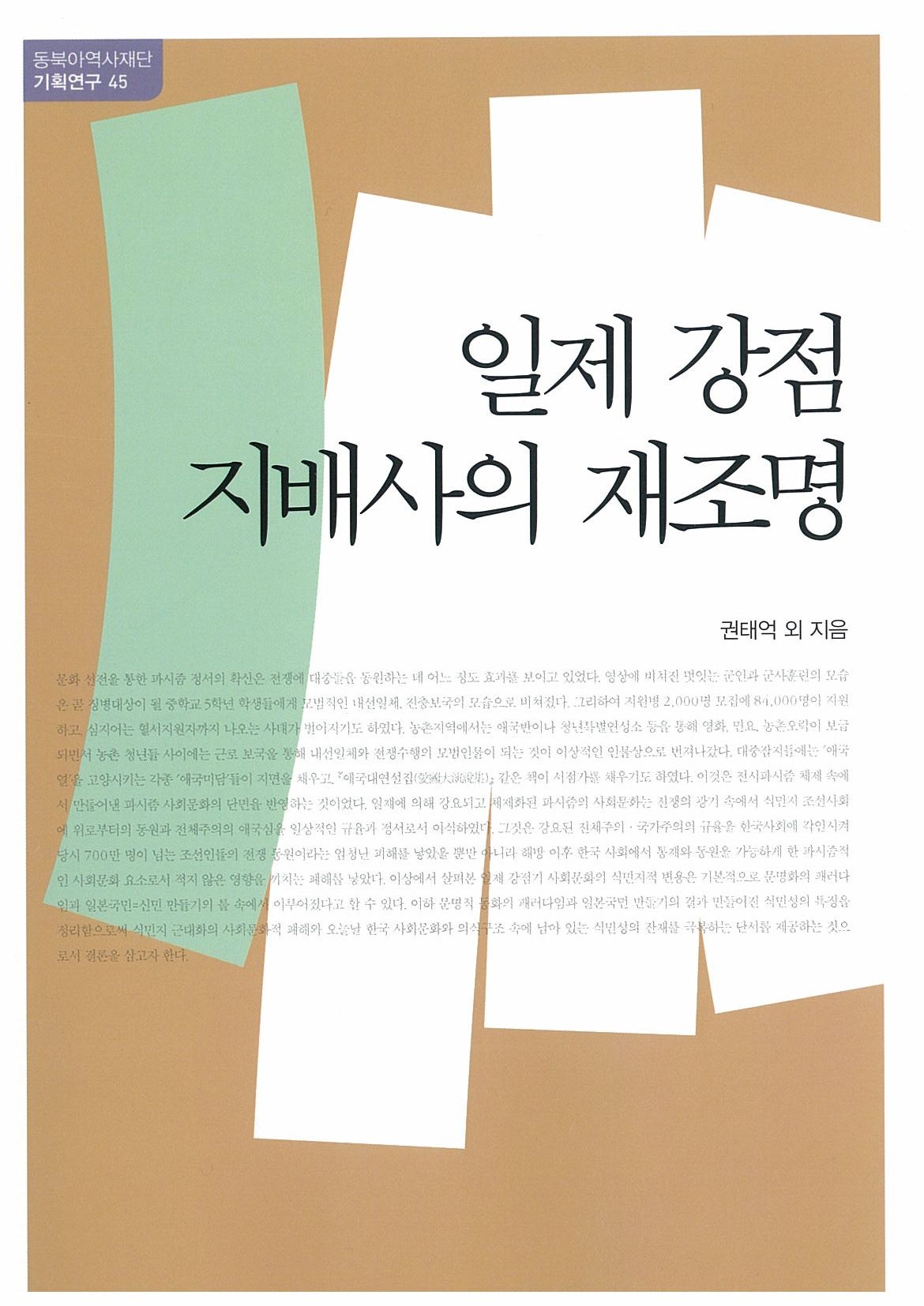Publication
- Date2011.09.06
- Hit1876

1. Northeast Asian History Foundation holds the copyright on the files included in this website.
2. No part of them shall be reproduced in any form or by any means without permission.
Title : (No. 45 in a project research series by Northeast Asian History Foundation)
A Review of Japan's Occupation and Rule
Authored by KWON Tae Eok et al.
Northeast Asian History Foundation | Printed on A5 | 284 pages | 12,000 Won | 2010.12.22
ISBN 978-89-6187-206-5 93910
This book was published as one of the project research series at the centenary of Japan's forceful annexation of Korea when this Foundation was summing up the history of the Japan's forceful occupation and rule to help clearly understand problems in the Japanese annexation and colonial rule. Accordingly, this book rearranges outcomes of studies on Japan's forceful occupation and colonial rule of Korea in an attempt to define the essence of the history conflict between the two countries and further explore a truthful direction for reaching a reconciliation about history.
This book deals with the history of the Japanese occupation period in six different areas: policies, economy, general life, social culture, independence movement and Manchuria. Each area has been written by experts with authority in that area so that readers will have correct and objective knowledge of Japan's occupation of Korea and its colonial rule.
Particularly, in the general life section of the history, Professor PARK Chan Seung (Hanyang University) traces 'the nature of colonial modernity' being reflected in usual lives in colonized Korea. This period under the Japanese colonial rule in the Korean history was also a period during which Korea was being included into the capitalist world and its modernity was surging into the country. Therefore, 'the nature of colonial modernity' must have been reflected in usual lives during this period and accordingly the article explains in detail the contents in 'the nature of colonial modernity' in real lives in Korea.
This book offers a ground where one can view Japan's occupation of Korea and colonial rule from a new perspective within the world history, and therefore it will contribute to overcoming the history conflict with Japan and explore a direction for history reconciliation. In addition, at the centenary of Japan's annexation of Korea, this book will be useful not jut for experts in relevant fields but for educators and the general public as well.
The history of Japanese policies for its colonial rule
I. Basic nature
II. Reorganization into a colony (1910~1919)
III. Changing the governing system and economic exploitation (1920~1930)
IV. Changing the governing system for invasion of the continent (1931~1936)
V. Wartime mobilization (1937~1945)
The 20th century Korean economy and the economic change during Japanese colonial rule
I. Introduction
II. The time when the Korean economy was modernized
III. The characteristics of development under colonization
IV. Liberation, its meaning for the economy
V. Conclusion
Usual lives in Colonized Korea
I. Introduction
II. Changes in the population composition
III. City life
IV. Rural life
V. Opportunities for education and medical service
VI. Conclusion
Social cultures influenced by colonialism during the Japanese rule
I. Introduction
II. Proposition for assimilation and colonial rule of culture
III. Expansion of modern culture and the dual society
IV. 'Cultural politics' and popularization of culture
V. Traditions changed in line with colonialism
VI. Transplantation of Fascism culture and sentiment
VII. Conclusion
History of Korea's Independence Movement
I. Definition and nature of independence movement
II. Changes and development of independence movements according to periods
III. Multi-dimensional and other characteristics of independence movement
IV. Modern and historical nature of independence movement
Korea's annexation and Korean communities in Manchuria
I. Introduction
II. Formation of Korean communities in Manchuria and the shock of Korea's annexation
III. Japanese invasion of the continent and agricultural migration of Koreans
IV. Urbanization of Manchuria and changes of Korean communities in Manchuria
V. Conclusion
